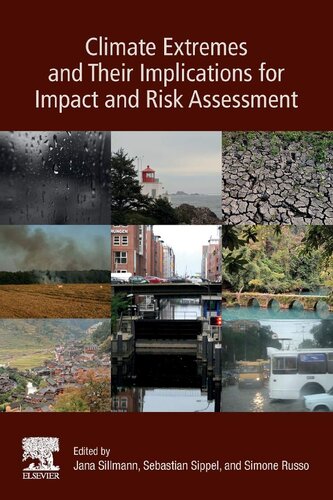

Most ebook files are in PDF format, so you can easily read them using various software such as Foxit Reader or directly on the Google Chrome browser.
Some ebook files are released by publishers in other formats such as .awz, .mobi, .epub, .fb2, etc. You may need to install specific software to read these formats on mobile/PC, such as Calibre.
Please read the tutorial at this link: https://ebookbell.com/faq
We offer FREE conversion to the popular formats you request; however, this may take some time. Therefore, right after payment, please email us, and we will try to provide the service as quickly as possible.
For some exceptional file formats or broken links (if any), please refrain from opening any disputes. Instead, email us first, and we will try to assist within a maximum of 6 hours.
EbookBell Team

4.4
32 reviewsClimate extremes often imply significant impacts on human and natural systems, and these extreme events are anticipated to be among the potentially most harmful consequences of a changing climate. However, while extreme event impacts are increasingly recognized, methodologies to address such impacts and the degree of our understanding and prediction capabilities vary widely among different sectors and disciplines. Moreover, traditional climate extreme indices and large-scale multi-model intercomparisons that are used for future projections of extreme events and associated impacts often fall short in capturing the full complexity of impact systems.
Climate Extremes and Their Implications for Impact and Risk Assessment describes challenges, opportunities and methodologies for the analysis of the impacts of climate extremes across various sectors to support their impact and risk assessment. It thereby also facilitates cross-sectoral and cross-disciplinary discussions and exchange among climate and impact scientists. The sectors covered include agriculture, terrestrial ecosystems, human health, transport, conflict, and more broadly covering the human-environment nexus. The book concludes with an outlook on the need for more transdisciplinary work and international collaboration between scientists and practitioners to address emergent risks and extreme events towards risk reduction and strengthened societal resilience.